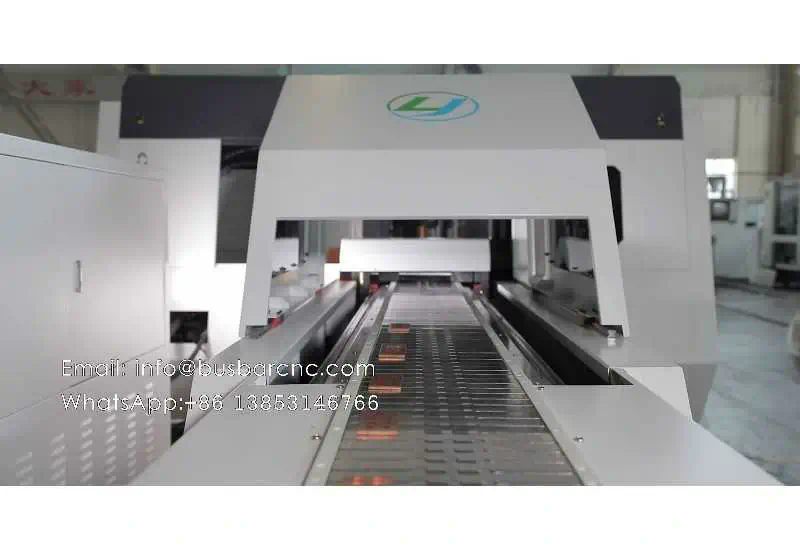Understanding Busbar Trunking Systems- Applications and Benefits
Busbar trunking systems are essential components in modern electrical installations, providing a reliable and efficient way to distribute power within buildings and industrial facilities. In this article, we will explore the applications and benefits of busbar trunking systems, shedding light on their versatility and advantages in various settings.
Busbar trunking systems consist of an enclosed structure that houses copper or aluminum busbars, which are used to carry electrical power from the main distribution board to various sub-distribution points throughout a building. The busbars are insulated within the enclosure to ensure safety and protection against accidental contact.
Applications of Busbar Trunking Systems
Busbar trunking systems find extensive applications in a sheet metal forming machines wide range of settings, including commercial buildings, industrial facilities, data centers, and more. Here are some key applications where busbar trunking systems are commonly used:
Commercial Buildings
In commercial buildings such as offices, shopping malls, and hospitals, busbar trunking systems are preferred for their ease of installation, scalability, and flexibility. They allow for efficient power distribution across different floors and sections of the building, accommodating the varying power requirements of different tenants or departments.
Industrial Facilities
Industrial facilities, including manufacturing plants, warehouses, and production facilities, benefit greatly from the use of busbar trunking systems. These systems provide a robust and reliable solution for distributing power to heavy machinery, production lines, and other electrical loads present in industrial settings.
Data Centers
Busbar trunking systems are also widely utilized in data centers, where a continuous and reliable power supply is critical for the operation of servers, networking equipment, and other IT infrastructure. The compact design of busbar trunking systems helps optimize space utilization in data center environments.
Benefits of Busbar Trunking Systems
There are several key benefits associated with the use of busbar trunking systems in electrical installations. Let’s explore some of the advantages that make these systems a popular choice for power distribution:
Efficiency
One of the primary benefits of busbar trunking systems is their high efficiency in power distribution. The low impedance of the busbars results in minimal power losses during transmission, ensuring that the electrical energy reaches its intended destination with minimal wastage.
Flexibility
Busbar trunking systems offer a high degree of flexibility, allowing for easy customization and adaptation to changing power distribution needs. Additional tap-off units can be easily added or relocated along the length of the trunking system, providing a scalable solution for expanding electrical networks.
Safety
Ensuring the safety of electrical installations is paramount, and busbar trunking systems are designed with safety features to prevent electrical hazards. The enclosed structure of the trunking system protects the busbars from physical damage and provides insulation against contact, reducing the risk of electric shocks or short circuits.
Reliability

Reliability is a key aspect of busbar trunking systems, as they are designed to provide a continuous and uninterrupted power supply. The robust construction of the trunking system and the use of high-quality materials ensure long-term performance and reliability in diverse operating conditions.
Cost-Effectiveness
From an economic standpoint, busbar trunking systems offer cost-effective solutions for power distribution compared to traditional cable installations. The reduced installation time, lower maintenance requirements, and long service life of busbar trunking systems contribute to overall cost savings over the system’s lifecycle.
Conclusion
In conclusion, busbar trunking systems play a vital role in modern electrical installations, offering a range of benefits that make them a preferred choice for power distribution in various applications. Their efficiency, flexibility, safety, reliability, and cost-effectiveness make them an indispensable component in commercial, industrial, and institutional settings where reliable power distribution is essential.
By understanding the applications and benefits of busbar trunking systems, electrical engineers, facility managers, and building owners can make informed decisions when designing and upgrading electrical infrastructure to meet the evolving demands of modern buildings and facilities.
Busbar trunking systems are essential components in modern electrical installations, providing a reliable and efficient way to distribute power within buildings and industrial facilities. In this article, we will explore the applications and benefits of busbar trunking systems, shedding light on their versatility and advantages in various settings.
Busbar trunking systems consist of an enclosed structure that houses copper or aluminum busbars, which are used to carry electrical power from the main distribution board to various sub-distribution points throughout a building. The busbars are insulated within the enclosure to ensure safety and protection against accidental contact.
Applications of Busbar Trunking Systems
Busbar trunking systems find extensive applications in a wide range of settings, including commercial buildings, industrial facilities, data centers, and more. Here are some key applications where busbar trunking systems are commonly used:
Commercial Buildings
In commercial buildings such as offices, shopping malls, and hospitals, busbar trunking systems are preferred for their ease of installation, scalability, and flexibility. They allow for efficient power distribution across different floors and sections of the building, accommodating the varying power requirements of different tenants or departments.
Industrial Facilities
Industrial facilities, including manufacturing plants, warehouses, and production facilities, benefit greatly from the use of busbar trunking systems. These systems provide a robust and reliable solution for distributing power to heavy machinery, production lines, and other electrical loads present in industrial settings.
Data Centers
Busbar trunking systems are also widely utilized in data centers, where a continuous and reliable power supply is critical for the operation of servers, networking equipment, and other IT infrastructure. The compact design of busbar trunking systems helps optimize space utilization in data center environments.
Benefits of Busbar Trunking Systems
There are several key benefits associated with the use of busbar trunking systems in electrical installations. Let’s explore some of the advantages that make these systems a popular choice for power distribution:
Efficiency
One of the primary benefits of busbar trunking systems is their high efficiency in power distribution. The low impedance of the busbars results in minimal power losses during transmission, ensuring that the electrical energy reaches its intended destination with minimal wastage.
Flexibility
Busbar trunking systems offer a high degree of flexibility, allowing for easy customization and adaptation to changing power distribution needs. Additional tap-off units can be easily added or relocated along the length of the trunking system, providing a scalable solution for expanding electrical networks.
Safety
Ensuring the safety of electrical installations is paramount, and busbar trunking systems are designed with safety features to prevent electrical hazards. The enclosed structure of the trunking system protects the busbars from physical damage and provides insulation against contact, reducing the risk of electric shocks or short circuits.
Reliability
Reliability is a key aspect of busbar trunking systems, as they are designed to provide a continuous and uninterrupted power supply. The robust construction of the trunking system and the use of high-quality materials ensure long-term performance and reliability in diverse operating conditions.
Cost-Effectiveness
From an economic standpoint, busbar trunking systems offer cost-effective solutions for power distribution compared to traditional cable installations. The reduced installation time, lower maintenance requirements, and long service life of busbar trunking systems contribute to overall cost savings over the system’s lifecycle.
Conclusion
In conclusion, busbar trunking systems play a vital role in modern electrical installations, offering a range of benefits that make them a preferred choice for power distribution in various applications. Their efficiency, flexibility, safety, reliability, and cost-effectiveness make them an indispensable component in commercial, industrial, and institutional settings where reliable power distribution is essential.
By understanding the applications and benefits of busbar trunking systems, electrical engineers, facility managers, and building owners can make informed decisions when designing and upgrading electrical infrastructure to meet the evolving demands of modern buildings and facilities.


